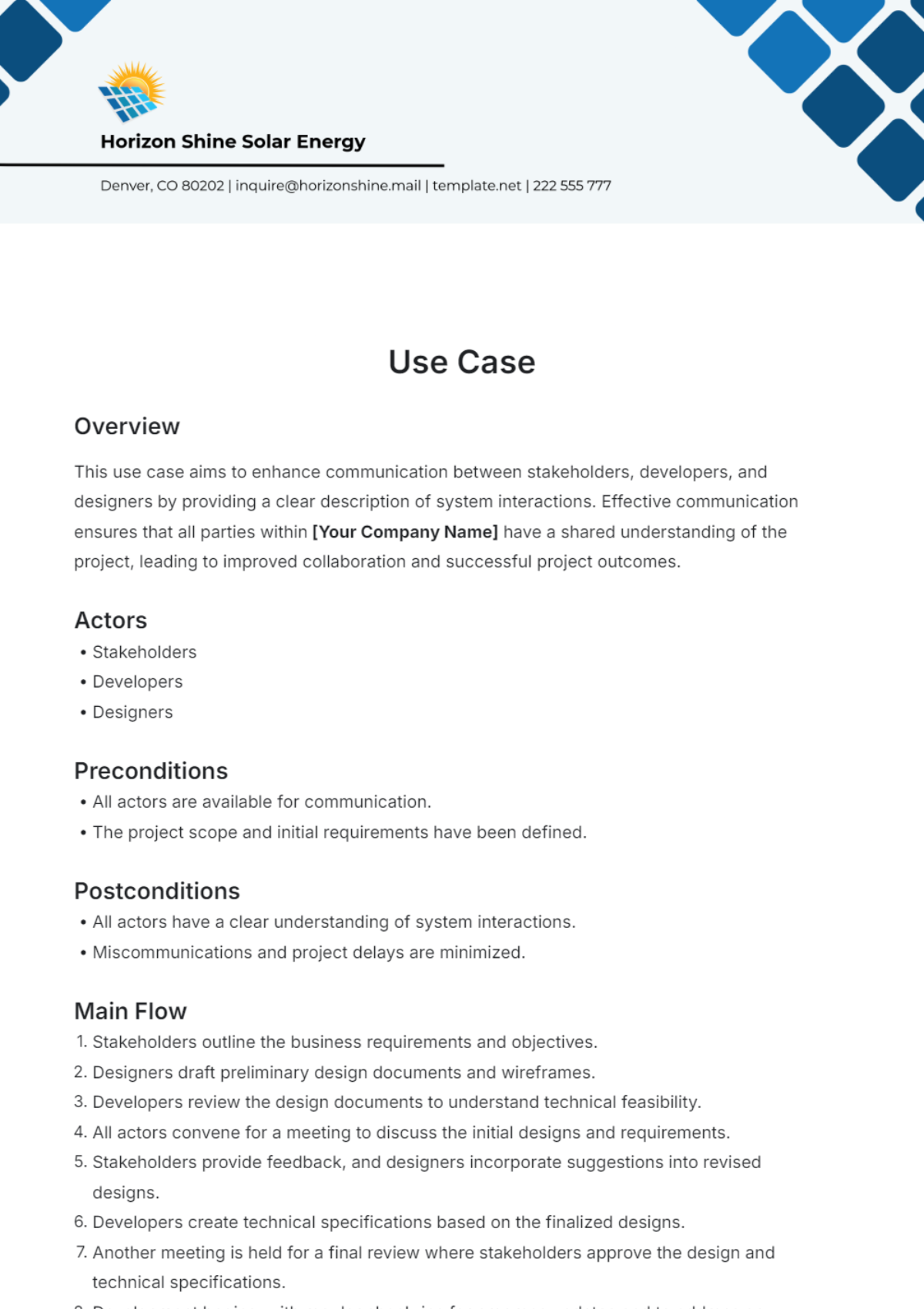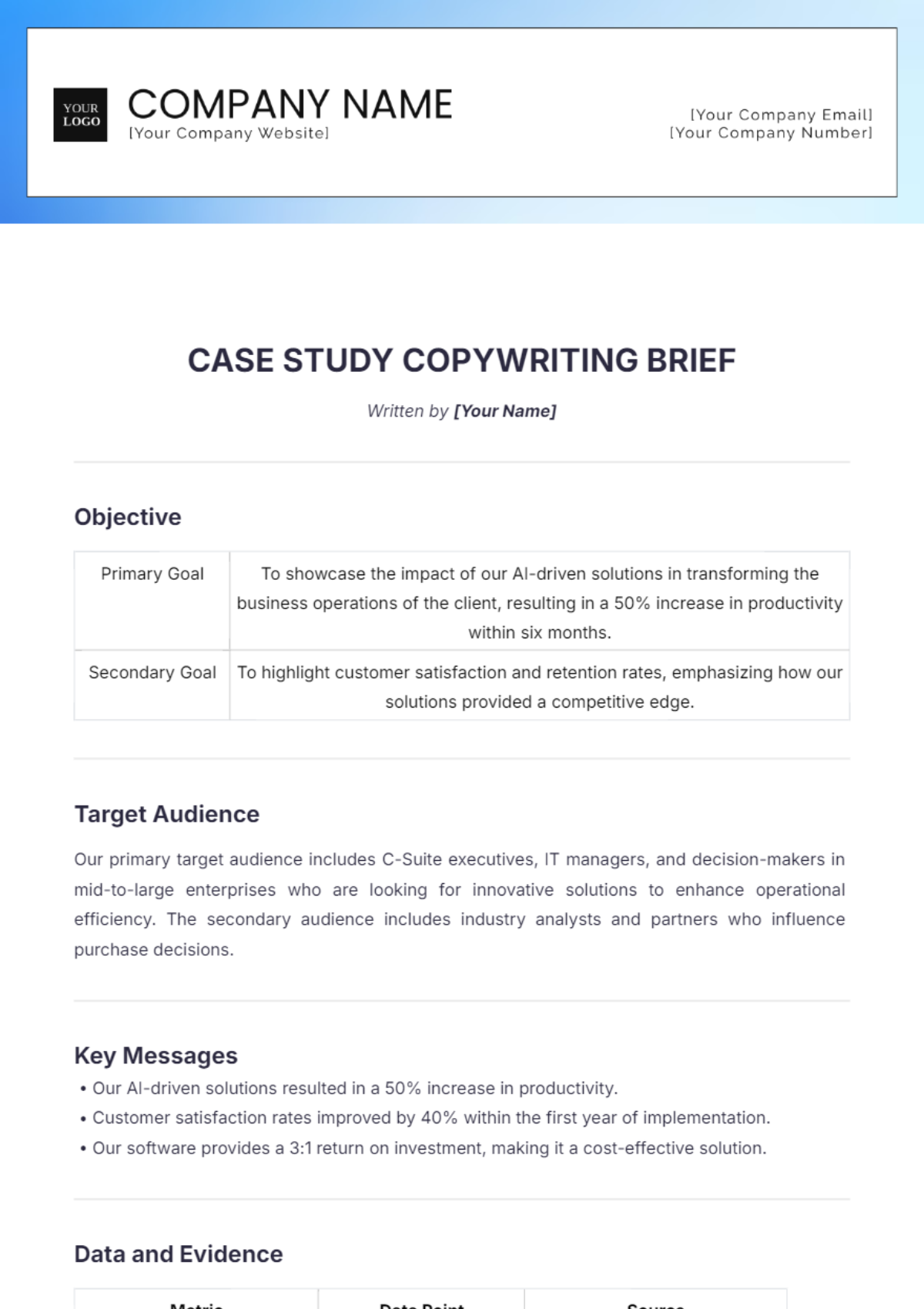I. Introduction
In this Administration Crisis Management Case Study, we delve into the crisis response of [Your Company Name], a prominent player in the Tech Industry sector, to a significant incident that occurred on [February 15, 2050]. The incident, characterized by a cyber attack resulting in a data breach compromising customer information, presented substantial challenges to the organization's operations and reputation. This case study offers an in-depth examination of the crisis management strategies employed by [Your Company Name] to mitigate the repercussions of the incident and restore normalcy.
II. Background
[Your Company Name] is a well-established entity in the Tech Industry domain, known for its innovative software solutions and commitment to excellence. Founded in [2050], the company has grown to become a market leader in providing cutting-edge technology services to clients worldwide.
Headquartered in [Your Company Address], [Your Company Name] operates regional offices in major cities across North America, Europe, and Asia-Pacific, serving a diverse clientele ranging from small businesses to multinational corporations. The company's reputation for reliability and innovation has earned it a loyal customer base and positioned it as a trusted partner in the industry.
The incident on [February 15, 2050], posed significant challenges to [Your Company Name]'s operations. The cyber attack targeted the company's IT infrastructure, resulting in the unauthorized access and theft of sensitive customer data, including personal information and financial records. As news of the breach spread, [Your Company Name] faced heightened scrutiny from regulators, media, and concerned stakeholders, threatening to tarnish its reputation and erode customer trust.
Amidst the crisis, [Your Company Name] recognized the urgent need to respond decisively to contain the impact of the breach and safeguard its reputation. The company mobilized its crisis management team and enacted a comprehensive response plan aimed at addressing the immediate threats posed by the incident, restoring customer confidence, and strengthening its cybersecurity measures to prevent future breaches.
III. Incident Overview
The cyber attack on [February 15, 2050], targeted [Your Company Name]'s IT infrastructure, exploiting vulnerabilities in the system to gain unauthorized access to sensitive customer data. The breach compromised a vast amount of information, including personal identification data, payment details, and transaction records of thousands of customers. Upon discovery of the breach, [Your Company Name] immediately initiated an investigation to assess the extent of the damage and identify the perpetrators.
The incident had far-reaching implications for [Your Company Name]'s operations and reputation. In addition to the potential financial losses resulting from legal liabilities and regulatory fines, the breach posed a significant threat to the company's credibility and trustworthiness among customers and stakeholders. The breach not only exposed the vulnerabilities in [Your Company Name]'s cybersecurity infrastructure but also raised concerns about the company's ability to protect sensitive information and maintain data privacy standards.
IV. Crisis Management Plan
Prior to the cyber attack, [Your Company Name] had developed a robust crisis management plan designed to address various emergency scenarios, including cybersecurity breaches. The plan outlined clear protocols and procedures for responding to crises, assigning specific roles and responsibilities to key personnel, and establishing communication channels to coordinate the company's response efforts effectively.
The crisis management team, comprised of senior executives from across departments, was activated immediately following the discovery of the breach. The team convened to assess the situation, analyze the potential impact of the breach on [Your Company Name]'s operations and reputation, and develop a comprehensive response strategy.
As part of the crisis management plan, [Your Company Name] implemented the following key initiatives:
Action | Description |
|---|---|
Incident Response Team Activation | Activation of a dedicated team to oversee the company's response efforts, including IT specialists, legal counsel, and public relations experts. |
Forensic Investigation | Conducting a thorough forensic investigation to determine the cause and scope of the breach, identify compromised systems and data, and trace the source of the attack. |
Customer Notification | Notifying affected customers of the breach, providing guidance on steps to protect their personal information, and offering assistance, such as credit monitoring services, to mitigate potential harm. |
Regulatory Compliance | Ensuring compliance with data protection regulations and reporting requirements by promptly notifying relevant regulatory authorities of the breach and cooperating fully with investigations. |
Media and Stakeholder Communication | Establishing transparent communication channels to keep stakeholders informed of the situation, address concerns, and convey [Your Company Name]'s commitment to resolving the issue and safeguarding customer trust. |
By adhering to the crisis management plan and implementing these proactive measures, [Your Company Name] aimed to mitigate the impact of the breach, protect customer data, and restore confidence in its cybersecurity practices.
V. Immediate Response
Following the discovery of the cyber attack on February 15, 2023, [Your Company Name] initiated an immediate response to contain the breach, mitigate its impact, and protect sensitive customer data. The company's crisis management team swiftly implemented a series of actions to address the incident and ensure the security and integrity of its systems. Key components of the immediate response included:
Action | Description |
|---|---|
Incident Assessment | Conducting a comprehensive assessment of the breach to determine the extent of the intrusion, identify compromised systems, and assess the potential impact on customer data. |
System Isolation | Isolating affected systems and networks to prevent further unauthorized access and minimize the spread of malware or malicious activity within [Your Company Name]'s IT infrastructure. |
Data Breach Notification | Notifying internal stakeholders, including senior management and relevant departments, of the breach and activating the company's incident response protocols to initiate remediation efforts. |
Law Enforcement Coordination | Collaborating with law enforcement agencies, such as the FBI or local cybercrime units, to report the breach, share information, and assist in the investigation of the cyber attack. |
External Communication Strategy | Developing a communication strategy to notify customers, partners, and other external stakeholders of the breach, provide updates on the company's response efforts, and offer assistance to affected individuals. |
By swiftly implementing these measures, [Your Company Name] aimed to contain the breach, minimize the impact on its operations and customers, and demonstrate its commitment to protecting data privacy and security.
VI. Stakeholder Communication
Effective communication with stakeholders was paramount during the crisis to maintain transparency, address concerns, and preserve trust in [Your Company Name]'s brand and services. The company employed a multi-faceted communication strategy to reach different stakeholder groups and provide timely updates on the situation. Key elements of the stakeholder communication plan included:
Stakeholder Group | Communication Approach |
|---|---|
Customers | Direct communication via email, website notifications, and customer portals to notify affected individuals of the breach, explain the impact on their data, and provide guidance on protective measures and support resources. |
Employees | Internal communications via company-wide emails, virtual town halls, and intranet updates to inform employees of the breach, outline the company's response efforts, and address any concerns or questions. |
Regulatory Authorities | Formal notifications and reports submitted to relevant regulatory agencies, such as the Federal Trade Commission (FTC) or Data Protection Authorities (DPAs), to comply with data breach disclosure requirements and regulatory obligations. |
Media and Public | Press releases, media statements, and social media updates to provide accurate information about the breach, address public inquiries, and reinforce [Your Company Name]'s commitment to resolving the issue and protecting customer interests. |
VII. Recovery Efforts
In the aftermath of the cyber attack on [February 15, 2050], [Your Company Name] prioritized recovery efforts aimed at restoring normalcy, enhancing cybersecurity measures, and rebuilding trust with stakeholders. The company's post-incident recovery plan encompassed a range of initiatives designed to address the immediate aftermath of the breach and strengthen resilience against future cyber threats. Key components of the recovery efforts included:
Recovery Initiative | Description |
|---|---|
System Remediation | Conducting a comprehensive review and remediation of affected systems and networks to remove malware, patch vulnerabilities, and enhance security controls to prevent future breaches. |
Data Restoration | Restoring and validating the integrity of compromised data to ensure accuracy and completeness, leveraging backup systems and data recovery tools to recover lost or corrupted information. |
Customer Support | Offering dedicated customer support channels, such as hotlines or online chat services, to assist affected individuals with inquiries, address concerns, and provide guidance on identity protection measures. |
Cybersecurity Enhancements | Implementing enhanced cybersecurity measures, such as multi-factor authentication, encryption protocols, and intrusion detection systems, to strengthen defenses and mitigate the risk of future cyber attacks. |
Incident Response Review | Conducting a thorough review and analysis of the company's incident response processes and protocols to identify areas for improvement and implement corrective actions to enhance readiness for future incidents. |
By proactively addressing the impact of the breach and investing in cybersecurity enhancements, [Your Company Name] aimed to minimize the long-term repercussions of the incident and reinforce its commitment to protecting customer data and privacy.
VIII. Results and Outcomes
Despite the challenges posed by the cyber attack, [Your Company Name] was able to successfully navigate the crisis and achieve positive outcomes through its swift and decisive response efforts. The company's proactive approach to crisis management and commitment to transparency and accountability yielded several key results and outcomes, including:
Outcome | Description |
|---|---|
Operational Resilience | [Your Company Name] demonstrated resilience by quickly recovering from the breach, restoring normal operations, and minimizing disruptions to its business activities and customer services. |
Stakeholder Confidence | Through transparent communication and proactive measures, [Your Company Name] maintained the confidence of its stakeholders, including customers, partners, and investors, throughout the crisis. |
Reputation Enhancement | The company's handling of the cyber attack received positive feedback from stakeholders, reinforcing [Your Company Name]'s reputation for responsiveness, reliability, and commitment to cybersecurity. |
Overall, [Your Company Name] emerged from the crisis with strengthened cybersecurity defenses, enhanced stakeholder trust, and a renewed focus on proactive risk management and incident preparedness. The lessons learned from the incident will inform ongoing efforts to safeguard customer data, maintain operational resilience, and uphold [Your Company Name]'s reputation as a trusted leader in the tech industry.
IX. Conclusion
The cyber attack on [February 15, 2050], presented [Your Company Name] with a significant challenge, testing its resilience and crisis management capabilities. However, through a combination of proactive response efforts, transparent communication, and strategic recovery initiatives, the company was able to successfully navigate the crisis and emerge stronger than before.
The incident served as a valuable learning experience for [Your Company Name], highlighting the importance of robust cybersecurity measures, effective crisis preparedness, and stakeholder engagement in safeguarding against and mitigating the impact of cyber threats. By leveraging lessons learned from the incident, [Your Company Name] is better positioned to strengthen its cybersecurity posture, enhance operational resilience, and uphold its commitment to protecting customer data and trust.
Looking ahead, [Your Company Name] remains committed to continuous improvement and proactive risk management, ensuring that it remains vigilant and prepared to address emerging cyber threats and other potential crises. By maintaining a proactive and agile approach to crisis management, [Your Company Name] aims to reinforce its position as a trusted leader in the tech industry and continue delivering value to its customers, partners, and stakeholders.
X. References
During the preparation of this case study, [Your Company Name] consulted a range of sources to inform its analysis and response efforts. These include:
Internal incident reports and documentation detailing the cyber attack and response efforts.
Regulatory guidelines and best practices for data breach response and cybersecurity management.
Feedback and input from stakeholders, including customers, employees, and external partners, regarding their experiences and perceptions during the crisis.
Post-incident reviews and analyses conducted by cybersecurity experts and industry peers to identify trends, lessons learned, and areas for improvement in crisis management and cybersecurity practices.
By leveraging insights from these sources, [Your Company Name] was able to develop a comprehensive understanding of the incident, its impact, and the effectiveness of its response efforts, informing its ongoing efforts to enhance cybersecurity resilience and crisis preparedness.

















































